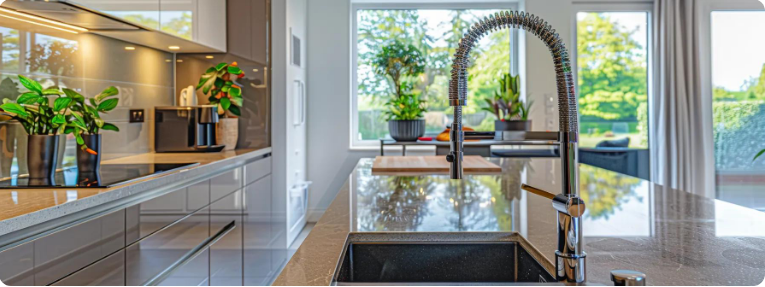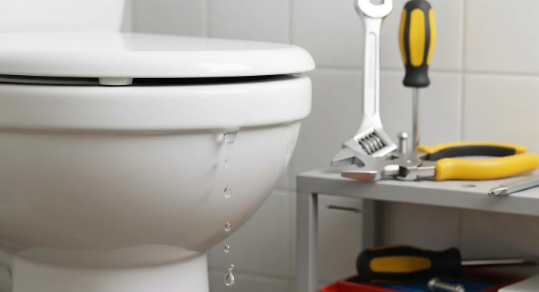
Best Tips to Prevent Blocked Drains
Slow or stagnant water flow, unusual sounds, and unpleasant smells often signal a developing clog. Early recognition allows prompt action that prevents severe backups and costly repairs. Clogged drains often present early indicators such as slow draining water, gurgling sounds, and unpleasant odors, signaling a developing obstruction within the plumbing system. Recognising these signs promptly allows for timely intervention, preventing severe backups and costly repairs down the line.
How to Identify Slow Draining Water and Gurgling Sounds
Slow drainage occurs when debris accumulates along pipe walls, reducing flow diameter. Gurgling emerges as trapped air bubbles force their way through standing water. These symptoms indicate partial obstruction in traps or branch lines and merit swift intervention to restore normal flow and prevent complete blockages.
What Causes Foul Odors and Water Backups in Drains?
Foul odors originate from decomposing organic matter like grease, hair, food scraps, lodged in P-traps or drain lines. Water backups arise when this buildup entirely blocks flow paths, forcing wastewater to reverse toward fixtures. Recognising these warning signs early safeguards against overflow and safeguards indoor air quality.
When Should You Call a Professional Plumber for Drain Issues?
Homeowners should engage a licensed plumber when basic measures, plunging or homemade cleaners, fail to clear slow drains, when problems recur within days, or if sewage begins to back up into multiple fixtures. Professional diagnosis prevents hidden damage to pipe joints, sewer mains, or septic systems and ensures compliant repairs under Brisbane plumbing regulations.
Which Daily Habits Help Prevent Drain Blockages in Your Home?
Incorporating targeted habits into everyday routines greatly reduces the risk of debris accumulation and pipe corrosion. Consistent attention to what enters your drains prevents most clogs before they form.
Implementing consistent daily habits, such as proper kitchen sink maintenance and the use of drain strainers, significantly reduces the risk of debris accumulation and pipe corrosion. These proactive measures help prevent clogs before they even form, ensuring the long-term health of your plumbing system.
How Does Proper Kitchen Sink Maintenance Reduce Clogs?
Kitchen sink upkeep combines hot-water flushes, grease management, and debris capture. Running hot tap water after each use softens grease, while routinely pouring a mixture of dish soap and hot water down the drain dissolves fatty residues. These steps preserve smooth inner pipe surfaces and sustain unrestricted flow rates.
Why Is Using Drain Strainers Important for Blockage Prevention?
Drain strainers physically intercept hair, coffee grounds, food particles, and other solids before they enter waste lines. Emptying and rinsing strainers after each use prevents particles from bypassing traps. Maintaining this simple barrier preserves drain capacity and eliminates frequent minor clogs.
What Role Does Garbage Disposal Usage Play in Drain Health?
Garbage disposals can macerate small food scraps but tend to overwork on fibrous or starchy waste, generating paste-like residues that adhere to pipe walls. Limiting disposal use to soft, small scraps and running ample cold water during operation prevents build-up. Periodic grinder cleaning with ice cubes and citrus peels removes lingering grease while deodorising the unit.
How Can Bathroom Sink and Toilet Care Prevent Blockages?
In bathroom sinks, avoid letting hair and soap scum enter the drain by using mesh catchers. Regularly clear soap buildup at the stopper. For toilets, limit tissue use to what easily flushes avoid flushing wipes or sanitary products. These practices reduce the frequency of hair and paper jams in P-traps and sewer lines.
What Are the Best DIY Drain Cleaning Tips to Avoid Blocked Drains?
Properly executed home remedies can clear minor clogs without harsh chemicals that damage pipes. Follow safe, effective steps to restore flow and maintain drain health.
How to Use Baking Soda and Vinegar Safely for Drain Cleaning
Combine ½ cup baking soda with ½ cup white vinegar in the drain, allow foaming action to loosen organic matter for 15 minutes, then flush with hot water. The reaction breaks down fatty and soapy deposits without introducing corrosive acids. Repeat monthly as preventative maintenance to preserve pipe interior smoothness.
When Is Boiling Water Effective for Clearing Minor Clogs?
Pouring a slow stream of near-boiling water down the drain can dissolve grease and soap scum within metal pipes. Use this method only for kitchen and bathroom sinks with metal traps, PVC joints may soften under extreme heat. Boiling-water flushes work best on early-stage blockages before solid debris forms.
How to Properly Use a Plunger for Different Plumbing Fixtures
Select a flange plunger for toilets and a cup plunger for sinks. Position the plunger to create an airtight seal, then use vigorous upward-downward strokes to dislodge obstructions. After 10–15 thrusts, break the seal and check drainage. Repeat if necessary, ensuring water covers the plunger cup for optimal pressure transmission.
What Are the Risks and Limits of DIY Drain Cleaning?
Home remedies may fail on hardened grease, scale buildup, or root intrusion, leading to repeated blockages. Overzealous use of chemical cleaners can erode pipe joints and kill beneficial drain-line bacteria. Recognising when DIY efforts are insufficient prevents accidental damage and preserves pipe integrity.
How Does Professional Preventative Drain Maintenance Protect Your Plumbing System?
Scheduled professional services employ advanced diagnostics and cleaning methods that eliminate hidden buildup, detect incipient issues, and uphold Brisbane plumbing standards for long-term reliability.
Regular professional drain maintenance, including inspections and hydro-jetting, is important for eliminating hidden buildup, detecting potential issues, and upholding plumbing standards. Certified plumbers possess the expertise to ensure preventative services are performed correctly, avoiding pipe damage and maintaining warranty integrity.
What Is Included in a Preventative Drain Maintenance Plan?
A comprehensive plan features routine camera inspections, hydro-jetting or snaking of branch lines, assessment of pipe material condition, and documentation of recurring trouble spots. Inspecting traps, vents, and sewer mains uncovers early corrosion or root intrusion, enabling targeted repairs before failures occur.
How Do Drain Inspections and Video Diagnostics Prevent Blockages?
Video cameras travel through pipes to pinpoint debris accumulations, scale deposits, or cracked sections. Visual evidence guides precision cleaning, avoiding unnecessary clearing of already clear lines. Documenting line conditions aids trend analysis, so plumbers recommend maintenance intervals based on actual wear rather than guesswork.
When Is Hydro Jetting or Snaking Recommended for Drain Cleaning?
Hydro jetting propels high-pressure water streams through pipes to scour away grease, sediment, and minor roots. Use this method annually for main sewer and kitchen lines. Mechanical snaking is ideal for localised clogs in bathroom or laundry drains. Both techniques deliver deeper cleaning than plungers or chemical treatments.
Why Choose Certified Plumbers for Drain Maintenance?
Certified plumbers hold licenses that confirm training in Brisbane plumbing codes, safe handling of equipment, and compliance with water-supply regulations. Their expertise ensures preventative services use correct water pressures, avoid pipe damage, and maintain warranty integrity on plumbing installations.
What Are the Most Common Causes of Blocked Drains and How to Avoid Them?
Identifying principal clog contributors informs effective prevention. By managing these sources, homeowners minimise downtime and repair costs.
Entity Attribute Value Grease & Oils Tendency to Solidify Adheres to pipe walls and traps when cooled Hair Accumulation Rate Forms entangled masses in bathroom drains Soap Scum Buildup Characteristics Combines with minerals to create hard deposits Food Waste Particle Size Large scraps exceed disposal capacity and block lines Tree Roots Intrusion Method Enter through hairline cracks seeking moisture, each of these elements can be managed through targeted habits and timely professional intervention before they compromise flow and pipe integrity.
How Can You Maintain Kitchen Sink Drains to Prevent Frequent Blockages?
Kitchen sinks face unique challenges from food preparation byproducts. Adopting specific cleaning and usage practices keeps drains clear and odor-free.
What Cleaning Practices Keep Kitchen Drains Clear and Odor-Free?
Weekly flushes with baking soda, vinegar, and hot water dissolve fatty residues and neutralise odors. Monthly manual removal of debris from strainers prevents solids from reaching the trap. These steps preserve a clean flow path and fresh indoor air quality.
How to Manage Garbage Disposal Use to Avoid Clogs?
Only run the disposal with running cold water and feed in small portions of soft food. Avoid fibrous peels (onion skins, celery), starchy items (pasta, rice), and grease. Clean blades by grinding ice cubes and citrus rinds monthly to dislodge sticky residues.
Which Foods Should Never Go Down the Kitchen Drain?
Solid fats, large potato peels, egg shells, coffee grounds, and fibrous vegetable scraps can bind into dense masses inside pipes. Discard these items in compost or trash bins to prevent accumulation and recurring sink blockages.
How Often Should You Schedule Professional Kitchen Drain Cleaning?
Annual hydro-jetting for kitchen lines clears grease baked onto pipe walls and removes early mineral scale. Biannual video inspections verify that hidden traps and branch junctions remain free of buildup, preventing unexpected backups.
What Are the Long-Term Benefits of Regular Drain Cleaning and Maintenance?
Consistent attention to drain health yields savings, safety, and system longevity, ensuring reliable plumbing performance for years to come.
- Cost Savings on Repairs: Preventative cleaning stops minor obstructions from escalating into burst pipes or sewer line collapses.
- Health and Hygiene: Clear drains eliminate stagnant water and bacterial growth, promoting a healthier living environment.
- Extended Plumbing Lifespan: Removing corrosive deposits and roots reduces wear on pipes, extending the service life of plumbing infrastructure.
- Enhanced Service Reliability: Working with certified professionals instills confidence through documented maintenance records and proven expertise.
Regular maintenance thus transforms reactive fixes into proactive care, securing both household budgets and plumbing integrity.
Maintaining open drains requires awareness of early warning signs, simple everyday habits, safe home remedies, and periodic professional intervention. Brisbane homeowners who adopt these strategies will enjoy uninterrupted water flow, reduced repair costs, and a healthier living space. Turning blocked drains from a recurring headache into a solved problem.
Recent Post

Hot Water System Warranties by Brands
Hot water system warranties protect Brisbane homeowners against manufacturing defects and component failures, with coverage periods varying significantly between brands. Bosch offers the most advantageous warranty terms with up to 15 years coverage on heat exchangers for continuous flow systems. Rheem provides comprehensive warranties up to 12 years on inner tanks across their product range, while Rinnai backs their gas continuous flow systems with 12-year heat exchanger coverage. Dux offers solid protection with 10-year warranties on electric tank cylinders, and Thermann provides competitive coverage with 8-year tank warranties. The best warranties cover expensive components like heat exchangers and tank cylinders for extended periods while including both parts and labour costs.

Best Tips to Prevent Blocked Drains
Nobody wants to deal with the frustration of blocked drains, especially when they could have been prevented with the right knowledge and habits. The truth is, most drain blockages don't happen overnight but develop gradually from everyday activities that seem harmless at the time.

Best Tips on How to Fix a Leaking Toilet
That constant sound of running water from your toilet isn't just annoying, it's literally flushing money down the drain. A leaking toilet can waste up to 200 gallons of water every single day, turning what should be a minor maintenance issue into a major hit on your utility bill. The good news? Most toilet leaks come from just a handful of common culprits, and many of them are surprisingly simple to fix yourself with basic tools and a little know-how.






.svg)